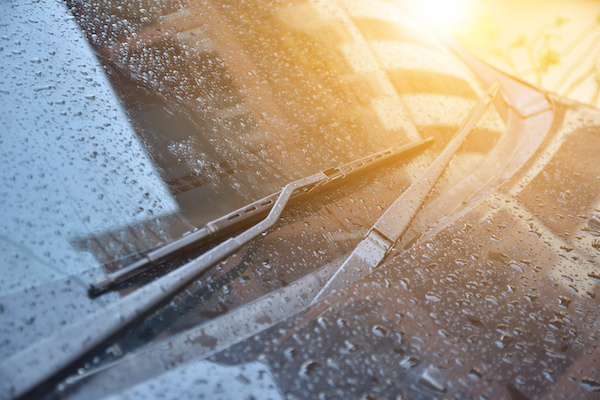Posted on 7/31/2023

A slight leak somewhere on your car can go unnoticed for quite some time, and most of the time, if it's not too serious. There is an exception - when there is a whole puddle under your vehicle or, in the worst case, more than one. This blog will uncover the reasons and the different types of fluid spills your car might have. 1. Clear and Odorless If you spot a clear and odorless puddle, especially after running your car's air conditioning system, don't worry. This is likely just condensation from the A/C evaporator, which is a normal occurrence and nothing to be concerned about. Important: If your car's cooling system runs only on water, make sure to have it inspected for leaks because it might be leaking the aforementioned water. 2. Green or Light Green A green or light green puddle is typically caused by a leak in your car's cooling system, often due to a damaged or worn-out radiator or a leaking coolant hose ... read more
Posted on 6/29/2023

Maintaining proper wheel alignment is often overlooked, yet it plays a crucial role in ensuring the smooth operation and longevity of your vehicle's suspension system. When wheels are misaligned, it can have a detrimental impact on various suspension components. Here is an explanation of why this occurs and the main reasons: Main Reasons: Uneven tire wear Increased stress on suspension components The strain on ball joints and bearings Impact on shock absorbers and struts Altered handling and stability One of the primary consequences of bad wheel alignment is uneven tire wear. When the wheels are not properly aligned, it causes uneven distribution of weight and forces on the tires. As a result, certain areas of the tire tread experience more friction and wear than others. Over time, this uneven wear leads to premature tire degradation, reducing tire life and necessitating premature replacement. Misaligned wheels place additional stress on various suspension c ... read more
Posted on 5/31/2023

Driving a car with unbalanced wheels can be uncomfortable and have negative consequences. Without proper wheel balancing, you could experience steering shake, steering issues, noise, vibration, tire and wheel wear, and overall poor driving performance. Here are five reasons why wheel balancing is vital for your car: 1. Improved Handling: By balancing your wheels, you can reduce steering shimmy and improve your car's maneuverability and overall handling. A properly balanced car ensures better control over the vehicle, making it safer and more enjoyable to drive. 2. Increased Tire Life: Unevenly distributed tire weight can cause tire and wheel wear, as well as increased fuel expenses due to increased friction. With regular wheel balancing, tires last longer, and your overall expenses for car maintenance are reduced. 3. Improve Safety: Unbalanced wheels can i ... read more
Posted on 4/26/2023

When it comes to brake systems in automobiles, one of the most critical part is the brake fluid. Brake fluid, or DOT fluid, transmits force and pressure from the brake pedal to the brake pads or shoes, stopping the vehicle. The braking system can stop working without the proper brake fluid and enough brake fluid, leading to dangerous driving situations. What is DOT Fluid? DOT fluid is a type of hydraulic fluid that is used in hydraulic brake and clutch systems. It is called DOT fluid because the U.S. Department of Transportation (DOT) sets the safety regulations for brake fluid. There are different types of DOT fluid, and each has a specific set of characteristics that make it suitable for particular types of vehicles. Types of DOT Fluid There are four types of DOT fluid: DOT 3, DOT 4, DOT 5, and DOT 5.1. Here are some key characteristics of each type: DOT 3: This type of fluid is the most commonly used in vehicles. It has a boiling point of 401°F and is glycol-based. It is su ... read more
Posted on 3/30/2023

Your windshield wipers are an essential safety feature of your vehicle, providing visibility in rainy and snowy conditions. However, over time, the wiper blades can become worn, reducing their effectiveness and potentially putting you at risk. In this blog, we'll look at when to change your windshield wiper blades to ensure optimal performance and safety. When the Wiper Blades Are No Longer Performing As They Should If your wiper blades are no longer cleaning your windshield effectively, it's time to replace them. Signs of poor performance include streaking, smearing, or skipping, which can be dangerous in heavy rain or snow. If your wiper blades are leaving behind a film or making noise as they move across your windshield, it's a sign that they are worn out and need to be replaced. When the Wiper Blades Have Been On Your Vehicle for More than a Year Even if your wiper blades appear to be in good condition, they should be replaced at least once a year or every 10,000 to ... read more